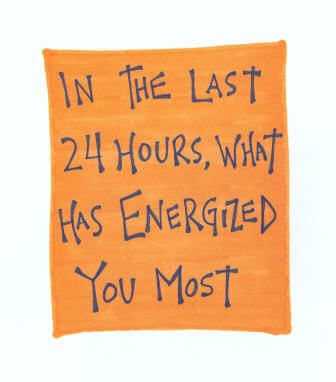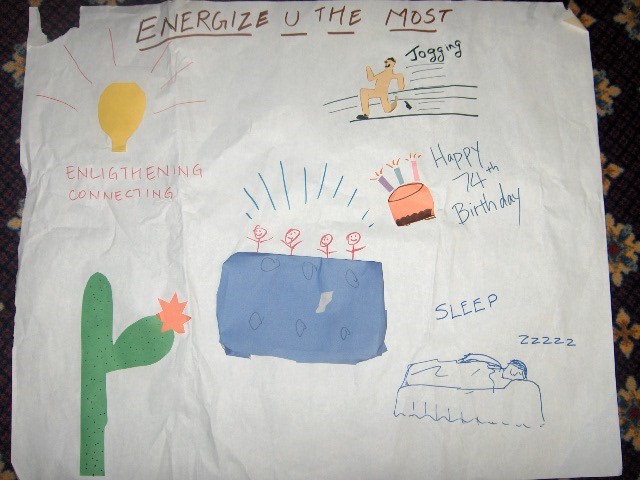

 Article
Article

 A leader’s job is to manage energy: their own, their reports’ and their organization’s. Virtual work poses additional challenges around all of these, especially as issues of trust and credibility have nuances obfuscated by the absence of face-to-face meetings. Professor Joe Harder provides insights on overcoming such challenges.
A leader’s job is to manage energy: their own, their reports’ and their organization’s. Virtual work poses additional challenges around all of these, especially as issues of trust and credibility have nuances obfuscated by the absence of face-to-face meetings. Professor Joe Harder provides insights on overcoming such challenges.

Insights from
One of my favorite sessions in Darden’s “Spirit of the New Workplace” MBA class or our “Leading in a Digital Age” Executive Education program is called Managing Individual and Organizational Energy.
We begin with a quote from Darden Professor Emeritus Jim Clawson: “A leader’s job is to manage energy … first in themselves and then in the rest of their organization.”
What does it mean to manage energy?
Let’s begin with ourselves. What does it mean to manage our own energy?
When I ask this question in class, the typical answers center around emotional intelligence (what do you do when you “wake up on the wrong side of the bed?”), the contagion effect of negative energy, and a thought that can be summed up as “put your own mask on first before assisting others” (the premise, as taught in outdoor leadership courses, that if you don’t take care of yourself as a leader, you’re no good to others).
At this point we address the question “In the last 24 hours, what has energized you the most?” using a prompt from What’s Your Perfect Day, a guided journal we use in “Spirit of the New Workplace.”

Participants, upon reflection, typically mention exercise, sleep, physical activity, connection with family or friends (especially if they are executives away from home), closing a deal, being in nature and engaging in meaningful discussions about leadership with colleagues. Just as a reminder: All these are possible even with the pandemic, and maybe even more necessary!
One group depiction included “jogging,” though upon closer inspection of their visual representation of the idea, it appears it should more properly be labeled “streaking.”

An excellent HBR article titled “Manage Your Energy, Not Your Time” includes a 16-question energy audit, covering mind, body, heart and soul, and when we calculate the scores of participants’ collective audits, whether executives or MBA students, many have red flags in the areas of mind and body, at least in a traditional physical office setting.
How has this changed in the last months? What challenges are you facing — mind, body, heart and soul — during the coronavirus crisis, and more importantly, what strategies are you finding useful?
Moving to the notion of organizational energy, participants usually highlight that leaders can be thought of as engaging in three sets of activities — unleashing, channeling and aligning energy. Unleashing is the realm of motivating, inspiring and spurring; channeling directs, reflects and corrects; and aligning unites, focuses and clarifies.
I typically ask people to take 15 to 30 seconds to think about one word that describes the energy in their organization (or part of the organization).
There is typically a mix of adjectives describing the energy level or a change in that (e.g., high, variable, steady, improving) as well as about the nature of the energy (e.g., positive, optimistic, trusting). Normally the report-out includes predominantly positive words, though occasionally “questionable” choices arise.
In the MIT Sloan Management Review article “Unleashing Organizational Energy,” Bruch and Ghoshal offer a 2x2 typology of organizational energy. As noted above, we can look at organizational energy in both quantitative and qualitative ways. If you walk into (or used to) a restaurant, store, place of business, school or government bureau, you might sense how much the place is “buzzing.” This quick, thin-slice impression is probably picking up on the quantity of energy that is being expended.
Whether the quality of the energy is positive or negative, though, often requires more anthropological digging (or at least listening in on a few conversations). If we cross quantity with quality, we see four quadrants.
If we find ourselves somewhere other than the passion zone (although my own preferred label is purpose zone), what can we as leaders do to change our organization’s energy?
TRY IT YOURSELF
At this point we form “random organic pods” and spend 10 minutes coming up with short skits that highlight de-energizing leadership we have seen, experienced or perpetrated on others. These skits are usually amusing and highlight things like taking credit for others’ work, playing favorites, holding 5 p.m. meetings on Friday, asking for things that don’t matter, apathy, ignorance ….
Research by former UVA McIntire School of Commerce Professor Rob Cross and colleagues suggests eight things leaders can do to be more positively energizing, and while virtual times make some of these more challenging, they are, paradoxically, likely to be more important than ever.
Virtual work poses additional challenges around all of these, especially as issues of trust and credibility have nuances obfuscated by the absence of nonverbal communication and face-to-face meetings.
When you need to focus on managing individual and organizational energy, here’s a cheat sheet.
POE: Positive Organizational Energy
R: Relationship Development on a Day-by-Day Basis
A: Ask Questions and Listen Instead of Providing Answers
V: Value Creativity, Courage, and Commitment
E: Encourage the Heart as Well as the Head
N: Notice Your Own Energy and Attention
Harder’s research interests encompass leadership, organizational change and reward systems. In particular he studies procedural justice in organizations, the effects of perceived injustice on individual performance, perceptions and effects of leadership, and pay-for performance systems; his dissertation topic was “Pay and Performance in Professional Sports.”
Active in Executive Education as well as the MBA program, he has taught all over the world. Prior to joining the Darden faculty, Harder taught at the Wharton School of the University of Pennsylvania and Santa Clara University.
He is a passionate baseball fan and has attended 11 San Francisco Giants fantasy camps.
B.S., Bethel College; MBA, Santa Clara University; Ph.D., Stanford University
Put On Your Own Mask First: Energy and Leadership in Challenging Times
Share